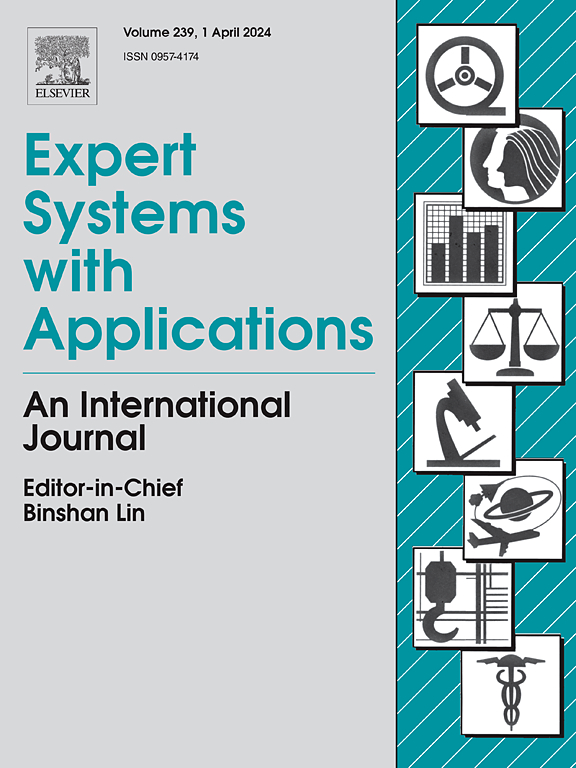面向车辆再识别的多元蒸馏融合网络
IF 7.5
1区 计算机科学
Q1 COMPUTER SCIENCE, ARTIFICIAL INTELLIGENCE
引用次数: 0
摘要
车辆再识别(Re-ID)是一种通过非重叠视图的多个摄像头对车辆进行匹配的方法,在智能交通系统中有着重要的应用。车辆Re-ID的一个关键挑战是从车辆图像中提取丰富的判别特征,同时有效地连接全局和局部特征以获得最优互补。为了解决这一挑战,我们提出了一种新的车辆Re-ID模型,该模型不仅融合了骨干网的多级特征,而且在不使用额外的检测或分割网络的情况下获取全局和局部特征。我们首先引入了跨空间和通道融合(CSCF)模块,将来自低级特征图的空间信息和来自高级特征图的语义信息集成在一起,从而利用来自不同级别的互补特征来提高识别性能。然后应用通道分区来生成多个局部特征,而不需要额外的分割网络。为了揭示重要的局部特征,我们进一步设计了深度关系空间注意(DRSA)模块,该模块加强了局部特征图不同区域之间的联系。此外,我们提出了多样性正则化自蒸馏(DRSD),其中全局表示指导局部分支学习不同的和互补的知识。这种创新的设计增强了模型的专门化,提高了模型的泛化和性能。在多个大型车辆Re-ID基准数据集上的实验结果表明,我们提出的多元蒸馏融合网络(DDFN)达到了最先进的性能。此外,还进行了大量详细的烧蚀研究,以证明模型设计的有效性。本文章由计算机程序翻译,如有差异,请以英文原文为准。
Diversified Distillation Fusion Network for vehicle re-identification
Vehicle re-identification (Re-ID), which focuses on matching vehicles through numerous cameras with non-overlapping views, has significant applications in intelligent transportation systems. A critical challenge for vehicle Re-ID is to extract abundant and discriminative features from vehicle images while effectively connecting global and local features for optimal complements. To address this challenge, we propose a novel vehicle Re-ID model that not only fuses multi-level features of the backbone network but also acquires global and local features without employing extra detection or segmentation networks. We first introduce Cross Spatial and Channel Fusion (CSCF) module to integrate spatial information from low-level feature maps and semantic information from high-level feature maps such that complementary features from different levels can be leveraged to enhance identification performance. The channel partition is then applied to generate multiple local features without requiring an additional segmentation network. To reveal the important local features, we further design Deep Relation Spatial Attention (DRSA) module that reinforces the connections between different regions of the local feature maps. Furthermore, we propose Diversity Regularized Self-Distillation (DRSD), where the global representation guides local branches to learn distinct and complementary knowledge. This innovative design enhances the specialization and improves the generalization and performance of the model. Experimental results on multiple large-scale vehicle Re-ID benchmark datasets demonstrate that our proposed Diversified Distillation Fusion Network (DDFN) reaches state-of-the-art performance. Furthermore, ablation studies are conducted with abundant detail to prove the effectiveness of our model design.
求助全文
通过发布文献求助,成功后即可免费获取论文全文。
去求助
来源期刊

Expert Systems with Applications
工程技术-工程:电子与电气
CiteScore
13.80
自引率
10.60%
发文量
2045
审稿时长
8.7 months
期刊介绍:
Expert Systems With Applications is an international journal dedicated to the exchange of information on expert and intelligent systems used globally in industry, government, and universities. The journal emphasizes original papers covering the design, development, testing, implementation, and management of these systems, offering practical guidelines. It spans various sectors such as finance, engineering, marketing, law, project management, information management, medicine, and more. The journal also welcomes papers on multi-agent systems, knowledge management, neural networks, knowledge discovery, data mining, and other related areas, excluding applications to military/defense systems.
 求助内容:
求助内容: 应助结果提醒方式:
应助结果提醒方式:


